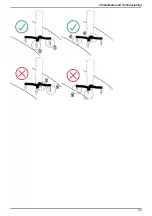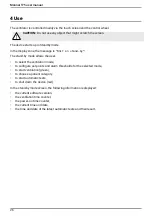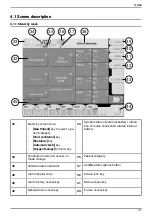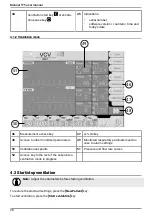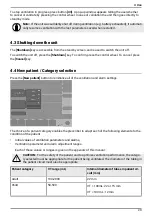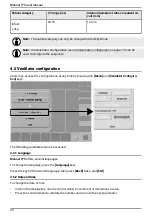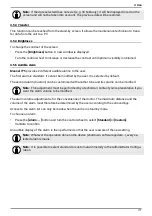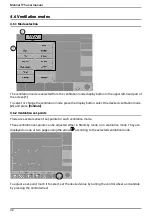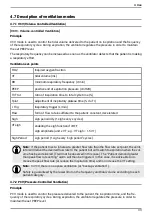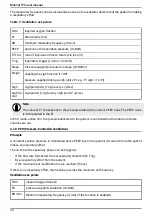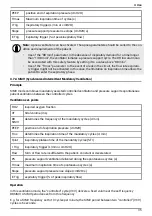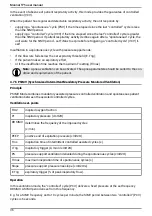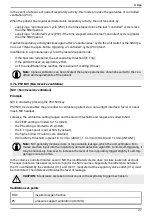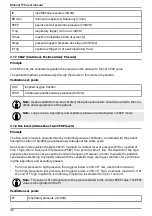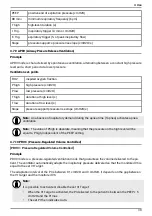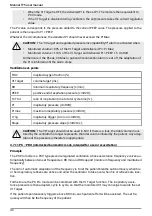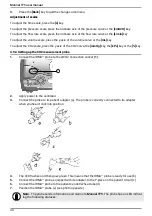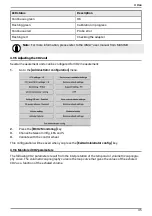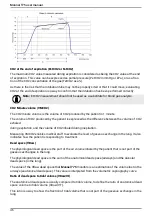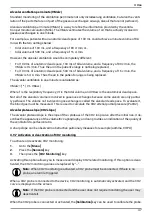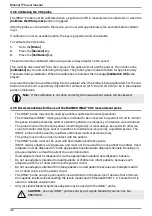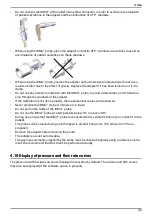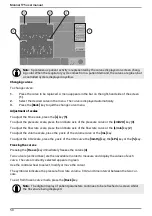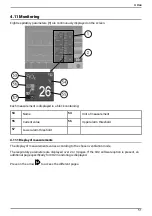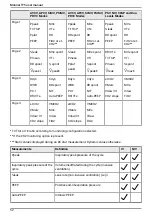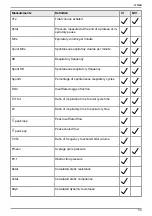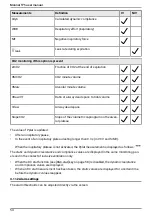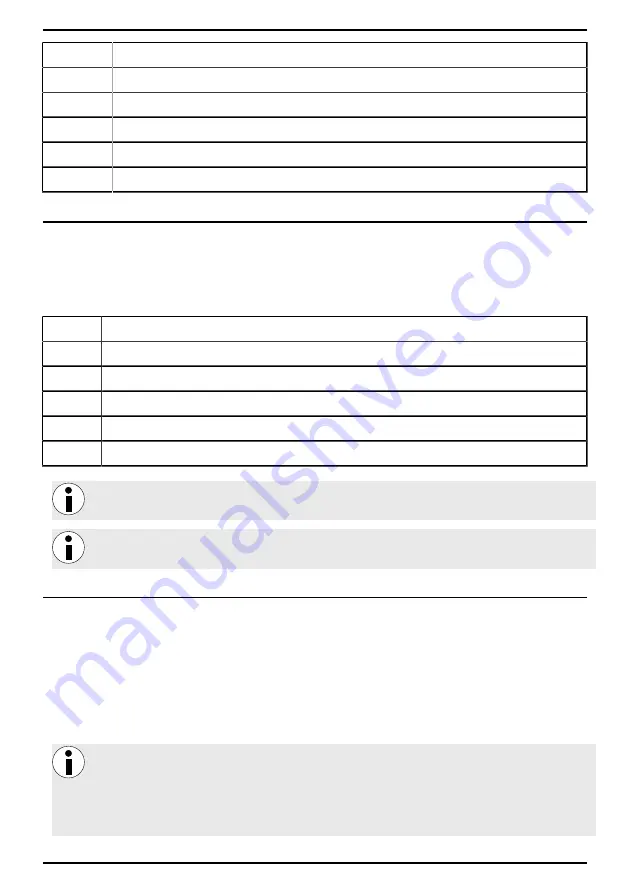
4 Use
PEEP
positive end of expiration pressure (cmH2O)
RR mini
minimum respiratory frequency (bpm)
T high
high-level duration (s)
I. Trig.
inspiratory trigger (L/min or cmH2O)
E. Trig.
expiratory trigger (% of peak inspiratory flow)
Slope
pressure support’s pressure rise slope (cmH2O/s)
4.7.9 APRV (Airway Presure Release Ventilation)
Principle
APRV mode is characterised by spontaneous ventilation, alternating between a constant high pressure
level and a short period at a lower pressure.
Ventilation set-points
FiO2
inspired oxygen fraction
P high
high pressure (cmH2O)
P low
low pressure (cmH2O)
T high
duration at high level (s)
T low
duration at low level (s)
Slope
pressure support pressure rise slope (cmH2O/s)
Note:
An absence of inspiratory demand during the apnea time (Tapnea) activates apnea
ventilation.
Note:
The value of Phigh is absolute, meaning that the pressure on the high level will be
equal to Phigh, independent of the PEEP setting.
4.7.10 PRVC (Pressure-Regulated Volume Controlled)
[PRVC = Pressure-Regulated Volume Controlled]
Principle
PRVC mode is a pressure-regulated ventilation mode that guarantees the volume delivered to the pa-
tient. The ventilator automatically adapts the inspiratory pressure delivered so that the monitored Vti is
equal to the set Vt Target.
The adaptation interval of the PI is between 0.1 cmH2O and 3 cmH2O. It depends on the gap between
the Vt Target and the monitored Vti.
Note:
It is possible to activate or disable the set Vt Target:
•
When the Vt Target is activated, the PI delivered to the patient is between the PEEP + 5
cmH2O and the PI max.
•
The set PI then indicates Auto.
39
Summary of Contents for MONNAL T75
Page 2: ......

